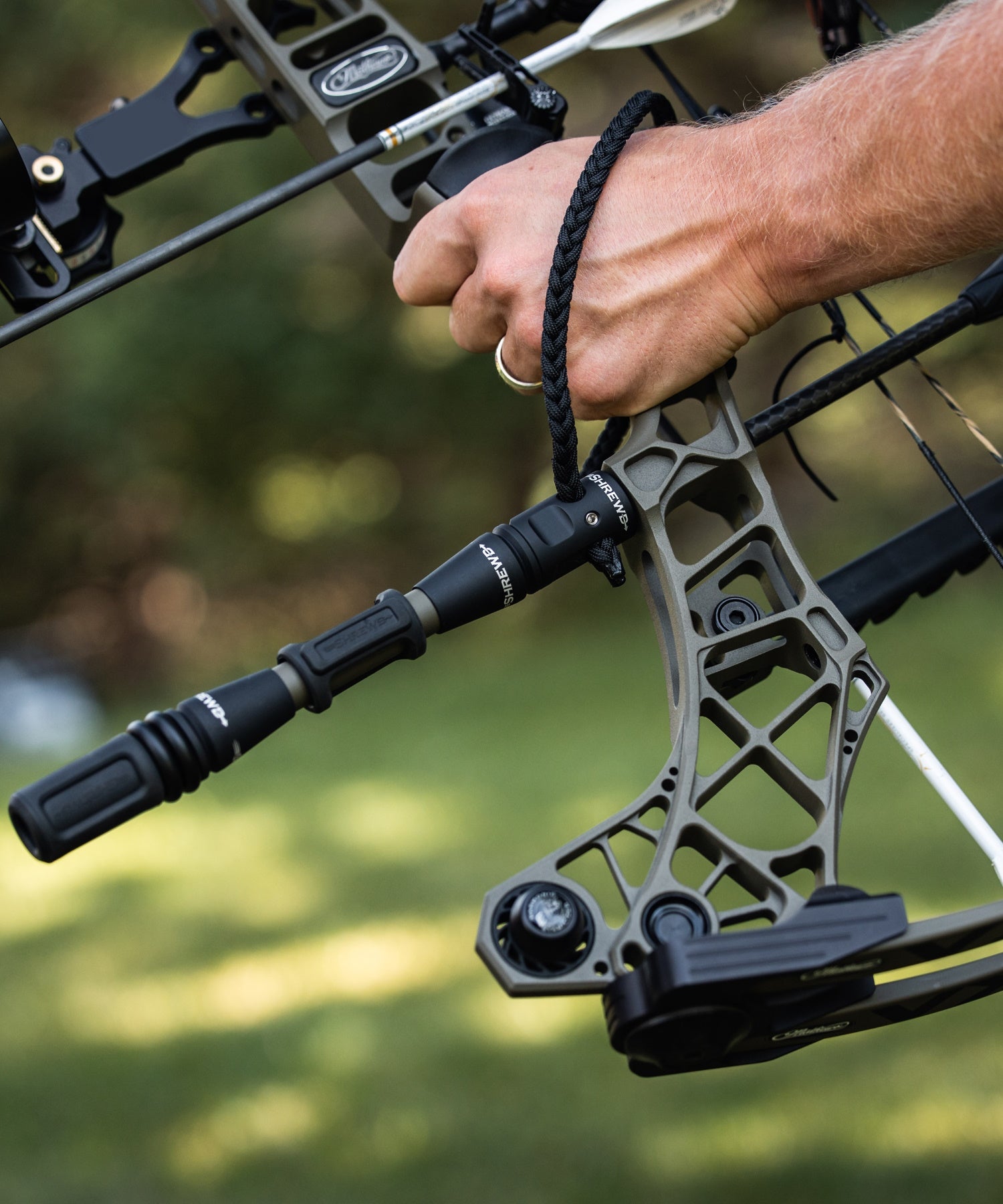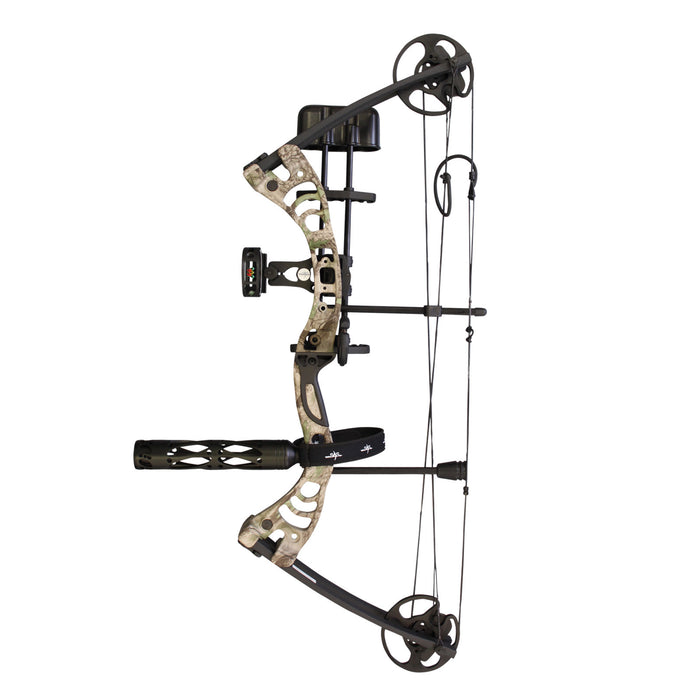Top Picks: Expert-Approved Compound Bow Stabilizers for each Spending plan
Maximizing Your Archery Performance With the Right Compound Bow Stabilizer: an Extensive Overview
In the realm of archery, precision and consistency are vital to accomplishing ideal efficiency. One crucial yet often-overlooked part in boosting precision is the substance bow stabilizer. This unassuming device plays a substantial function in steadying your purpose, reducing bow torque, and soaking up resonances. The effectiveness of a stabilizer hinges on different elements, consisting of positioning, weight, and style. By understanding the subtleties of selecting and optimizing a substance bow stabilizer, archers can fine-tune their tools to boost their capturing experience to new degrees of proficiency and control.
Relevance of Bow Stabilizers in Archery

In addition, bow stabilizers help in stabilizing the weight circulation of the bow, which can enhance the archer's stability while aiming and firing. By including weight to the front of the bow, stabilizers can reduce the quantity of torque experienced upon launch, resulting in a smoother and more controlled shot - compound bow stabilizer. This weight circulation also assists in holding the bow constant for a longer duration, enabling the archer to intend more precisely
Types of Substance Bow Stabilizers
When taking into consideration the various kinds of substance bow stabilizers readily available, it is important to recognize their unique functions and features to establish one of the most suitable choice for making best use of archery performance. The most common kinds of compound bow stabilizers include sidebar stabilizers, front stabilizers, and back stabilizers. Sidebar stabilizers connect to the sides of the riser and aid in balancing the bow throughout the aiming process. Front stabilizers, likewise referred to as lengthy rods, are connected to the front of the riser and aid in soaking up and decreasing any type of resonances triggered by the release of the arrow, therefore enhancing accuracy. Back stabilizers, likewise called rear stabilizers, are installed to the back of the bow and help in counteracting the weight of various other devices, causing enhanced security and constant intending. In addition, some stabilizers feature flexible weights that enable archers to adjust the equilibrium and feel of their bows according to their preferences, making them versatile alternatives for archery fanatics of all degrees.
Elements to Take Into Consideration When Picking
In assessing substance bow stabilizers, comprehending the distinct attributes and functions of each kind is important for making a notified decision on one of the most ideal choice to boost archery performance. When choosing a stabilizer, one need to consider the weight of the stabilizer itself. While a much heavier stabilizer can give more security by minimizing the bow's motion, it may additionally cause fatigue during lengthy shooting sessions. Balance is an additional important element to consider. The stabilizer's size and layout considerably influence the bow's balance, influencing the shooter's capacity to hold steady objective. Furthermore, the product of the stabilizer can influence its efficiency. Carbon fiber stabilizers are lightweight and take in resonances well, boosting accuracy. Additionally, the number and adjustability of dampeners on the stabilizer can adjust its efficiency by reducing noise and shock upon launch. By meticulously assessing these elements, archers can choose a compound bow stabilizer that lines up with their shooting style and maximizes their overall performance on the archery range.
Installation and Change Tips
For optimal efficiency and precision in archery, mastering the installment and adjustment of your bow stabilizer click is essential. Appropriate installation begins with affixing the stabilizer to the bow's riser, ensuring it is securely secured.
When changing the stabilizer, start with little step-by-step adjustments rather than drastic modifications. Pay focus to how the bow reacts to adjustments in stabilizer setups and make adjustments accordingly. On a regular basis examine the stabilizer's rigidity and general problem to guarantee it proceeds to operate ideally.
Upkeep and Treatment Standards

It is likewise necessary to keep your bow with the stabilizer in a protected and safe place when not being used. Avoid leaving it in extreme temperature levels or revealed to guide sunlight for extensive durations, as this might create damages to the stabilizer. Regularly check the stabilizer's placement to guarantee it is still appropriately positioned on your bow. Following these upkeep and treatment standards will certainly assist you get one of the most out of your bow stabilizer and improve your overall archery performance.
Final Thought
Finally, choosing the appropriate compound bow stabilizer is crucial for making best use of archery performance. Understanding the relevance, types, variables to think about, installment and adjustment ideas, in addition to upkeep click this site and care standards can greatly impact one's precision and consistency in capturing. By picking a stabilizer that suits specific requirements and preferences, archers can improve their total efficiency and achieve better results on the array or in competitors.
Bow stabilizers play a crucial function in boosting an archer's accuracy and consistency by minimizing resonances and stabilizing the bow throughout the release of an arrowhead - compound bow stabilizer.Additionally, bow stabilizers help in stabilizing the weight distribution of the bow, which can enhance the archer's security while intending and shooting. The most common kinds of substance bow stabilizers consist of sidebar stabilizers, front stabilizers, and back stabilizers. Back stabilizers, also called rear stabilizers, are installed to the back of the bow and help in reversing the weight of various other devices, resulting in enhanced stability and stable aiming. When choosing a stabilizer, one should consider the weight of the stabilizer itself